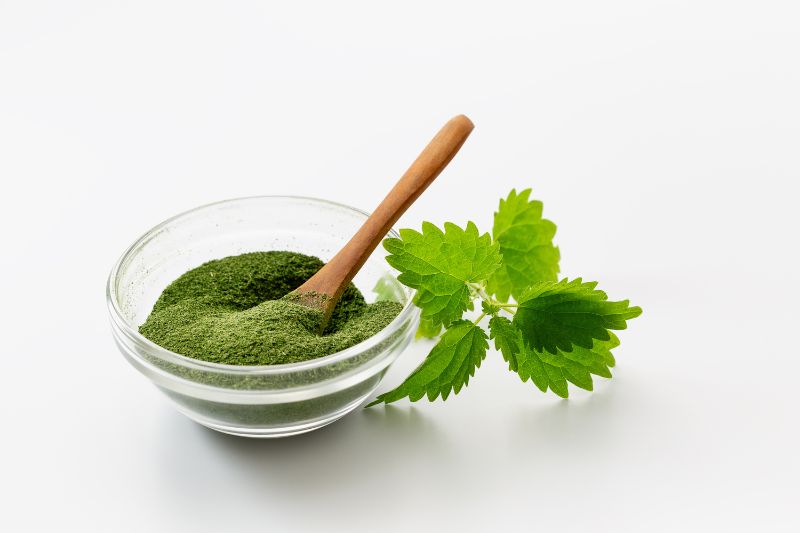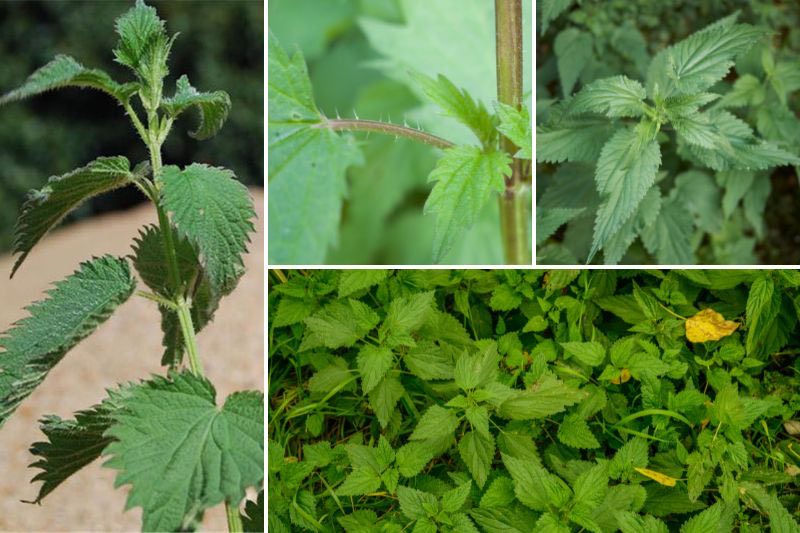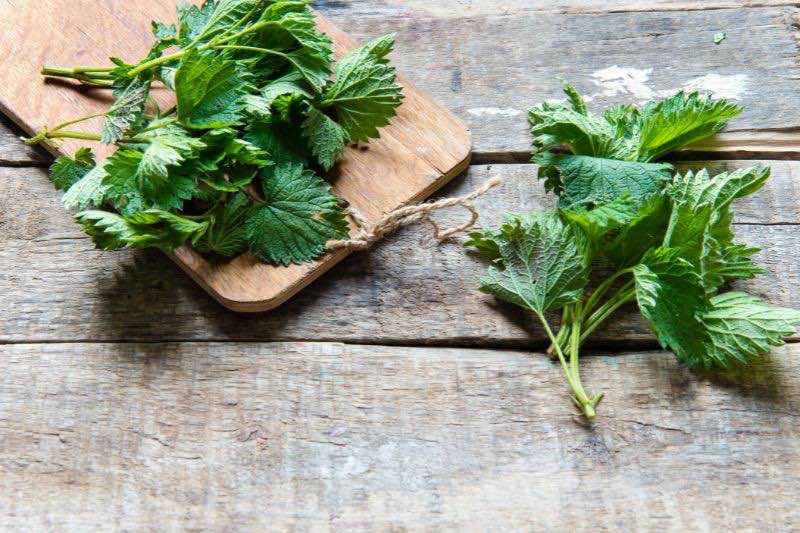Nettle, unloved when it stings, is gradually improving its reputation given its many benefits and wide range of uses. In the garden, first of all, keeping a nettle patch rather than trying to eradicate it allows it to fulfil its role as host plant for several insects and butterfly caterpillars. Gardener can also make manure from it and use this several times a year as fertiliser, as repellent, as plant stimulant and as compost activator. Cook uses it cooked in soup and tart, dried as tisane for its benefits, among others, on joints. It is also very interesting to reduce nettle to powder after drying it, thus rid of its sting, and use it in cooking to flavour dishes or in cosmetic use for hair or skin. Its benefits are numerous enough to make it worth taking time to prepare nettle powder, then usable in many different ways.

Technique and advice
Here are a few tips to prepare homemade nettle powder. It requires several stages, with a drying time for leaves in between. So it is necessary to plan ahead, but each stage is fairly quick to carry out.
Which nettle to use?
Choose Urtica dioica, great nettle or dioecious nettle to cover the full range of uses. Once dried, its stinging power is neutralised.

Do not confuse it with small nettle, Urtica urens, which is similar but does not exceed 20 to 60 cm in height while great nettle reaches 1.50 m to 2 m. Small nettle also has more pronounced teeth on leaf margins. White dead-nettle, Lamium album, looks similar but is not a nettle, it does not sting, its flowering is very different and it reaches about 50 cm in height.

Benefits of nettle powder
Nettle is reputed to have many benefits. Rich in vitamins and mineral salts, in alkalising calcium and in silica, it has remineralising virtues, useful for joints or for people suffering from joint pain and conditions such as osteoporosis, osteoarthritis or rheumatism. Naturally rich in vitamins A, B and C, nettle is also rich in magnesium, phosphorus, zinc and potassium. It contains a good amount of foliar proteins and is also very rich in iron.
Considered a powerful haemostatic (reducing bleeding), it has also been recognised since antiquity for astringent and depurative properties. Leaves are reputed to have anti-asthenic and anti‑anaemic action. They are therefore useful in treatment of fatigue and anaemia.
Rich in active constituents, it is necessary to obtain correct information before use to avoid unfortunate interactions or side effects in case of treatments or specific conditions.
Nettle is also reputed to have benefits for hair health: strengthening, soothing and regulating. For skin health, it is useful on atopic skin or skin suffering from eczema.
Uses of nettle powder
Nettle powder is therefore used after checking contraindications or seeking medical advice:
- Sprinkled over hot or cold foods — salads, cheeses, soups — at a rate of 1 to 3 teaspoons per day. In drinks, for example in vegetable juice. Taste is neutral.
- Included in homemade recipes for hair or skin masks, shampoos, aqueous macerates to make lotions.
When and how to make it?
It is necessary to pick nettles young, in spring, before flowering. This makes them less fibrous and gives a better result when reduced to powder. Moreover, after flowering leaves contain mineral concretions (cystoliths) that can irritate urinary tract.
Where to harvest nettles?
If nettle powder is consumed in cooking, sprinkled over foods, it is then raw. Particular attention must therefore be paid to picking locations, especially for food or cosmetic use.
- Nettle comes from your garden: ideal. If you have kept a nettle patch in garden, it is beneficial as host plant and you can pick at will for its many uses. You can also decide to sow it by obtaining seeds.
- When foraging outdoors during a walk, take a few precautions :
- Do not pick at road edges, in fields, or near polluted sites such as industrial zones or fallow land, because nettles there can concentrate heavy metals or hydrocarbons.
- In the wild, do not pick in wetland areas. Nettles favour this habitat and are often found near water points. This habitat favours diseases and parasites such as liver fluke.
- Also in the wild, avoid edges of forest paths, which are frequented by animals, notably foxes, disease vectors.
- As an additional precaution when foraging, harvest from 1 m height, or take only the first 20 centimetres. This minimises risk as much as possible.

Recipe and steps
- Pick stinging nettle stems wearing thick gloves and using scissors or a pruning shear.
- Remove leaves from stems.
- Wash leaves thoroughly.
- Spin in a salad spinner.
- Lay leaves in a single layer on a flat surface.
- Leave to dry for about a week in a dry place until fully dry; they will then curl in on themselves.
- Using a blender or chopper, blend gradually in small batches to obtain a very fine powder. If leaves are not dry enough, this operation is difficult and results are unsatisfactory.
- Transfer into an airtight jar or bag and store in a dry, dark place.






























![How to Make Homemade Nettle Powder [plant id="129" name="Nettle" type="perennial"] powder recipe](https://en.promessedefleurs.eu/blogwp/wp-content/uploads/2023/03/Tuto-Faire-sa-poudre-dortie-maison-.jpg)
Comments